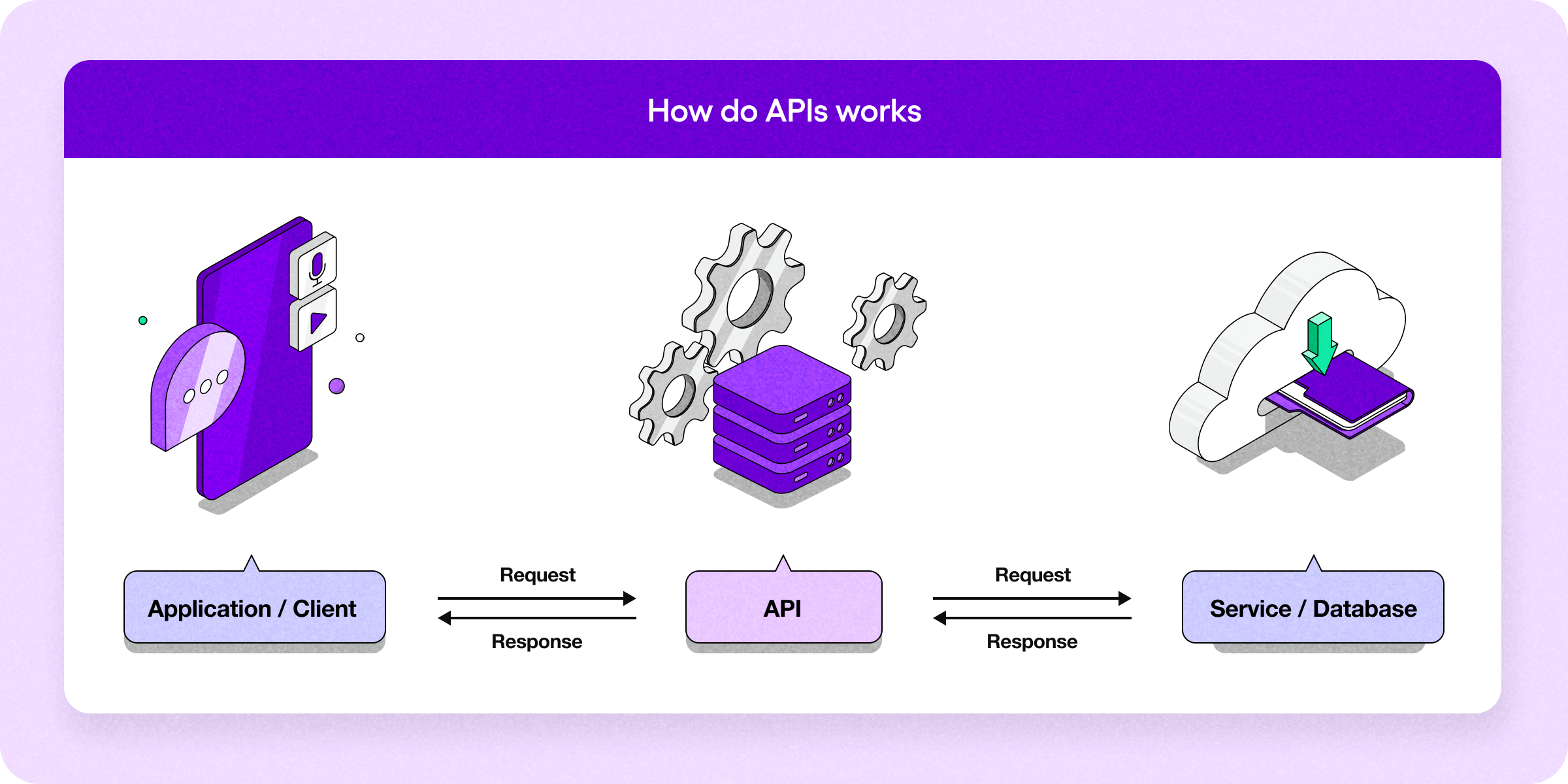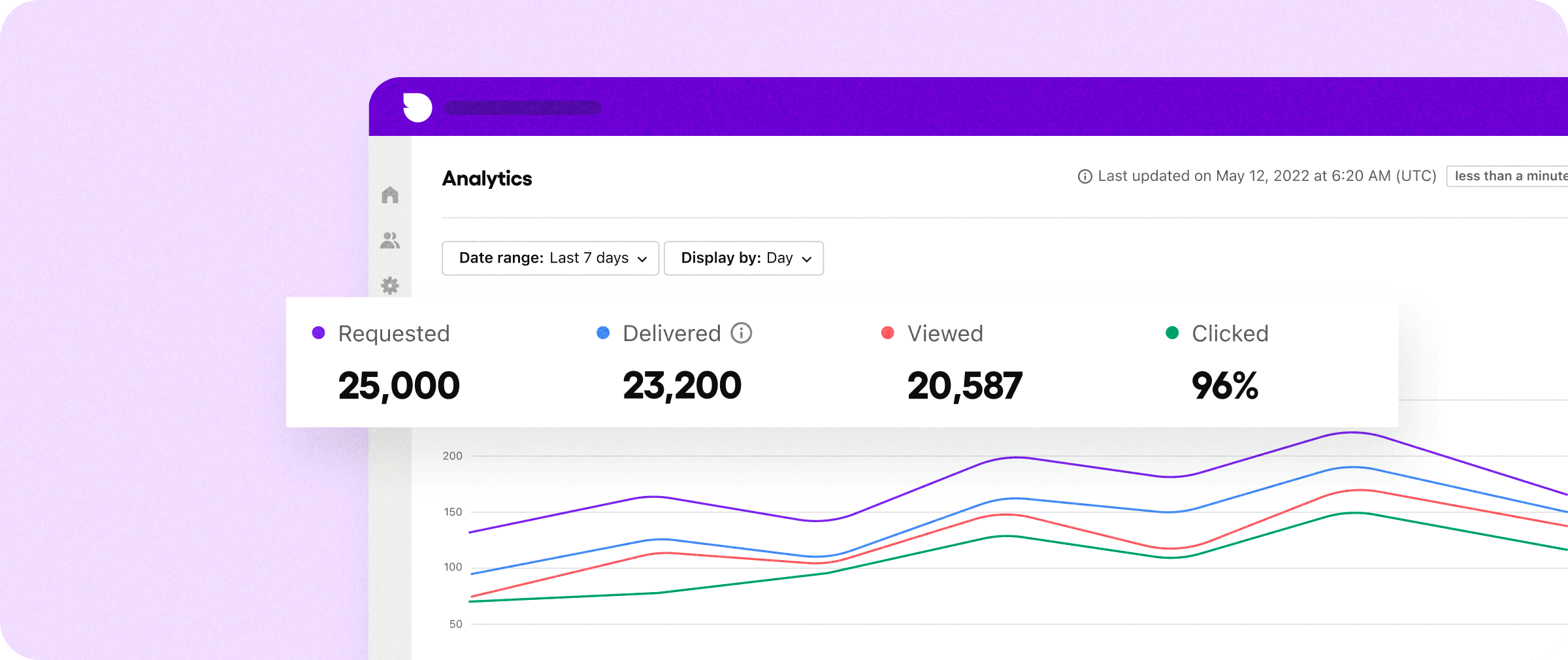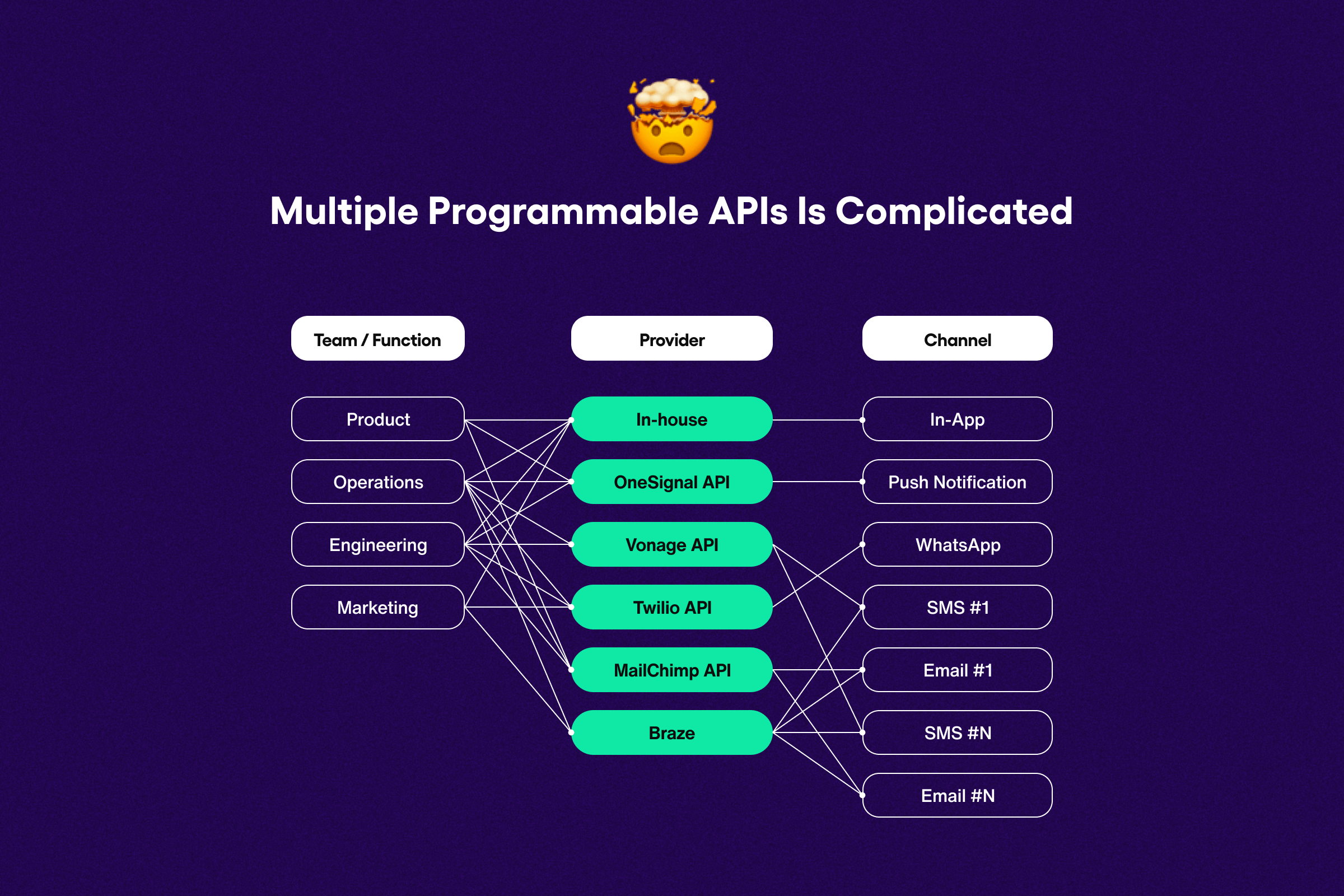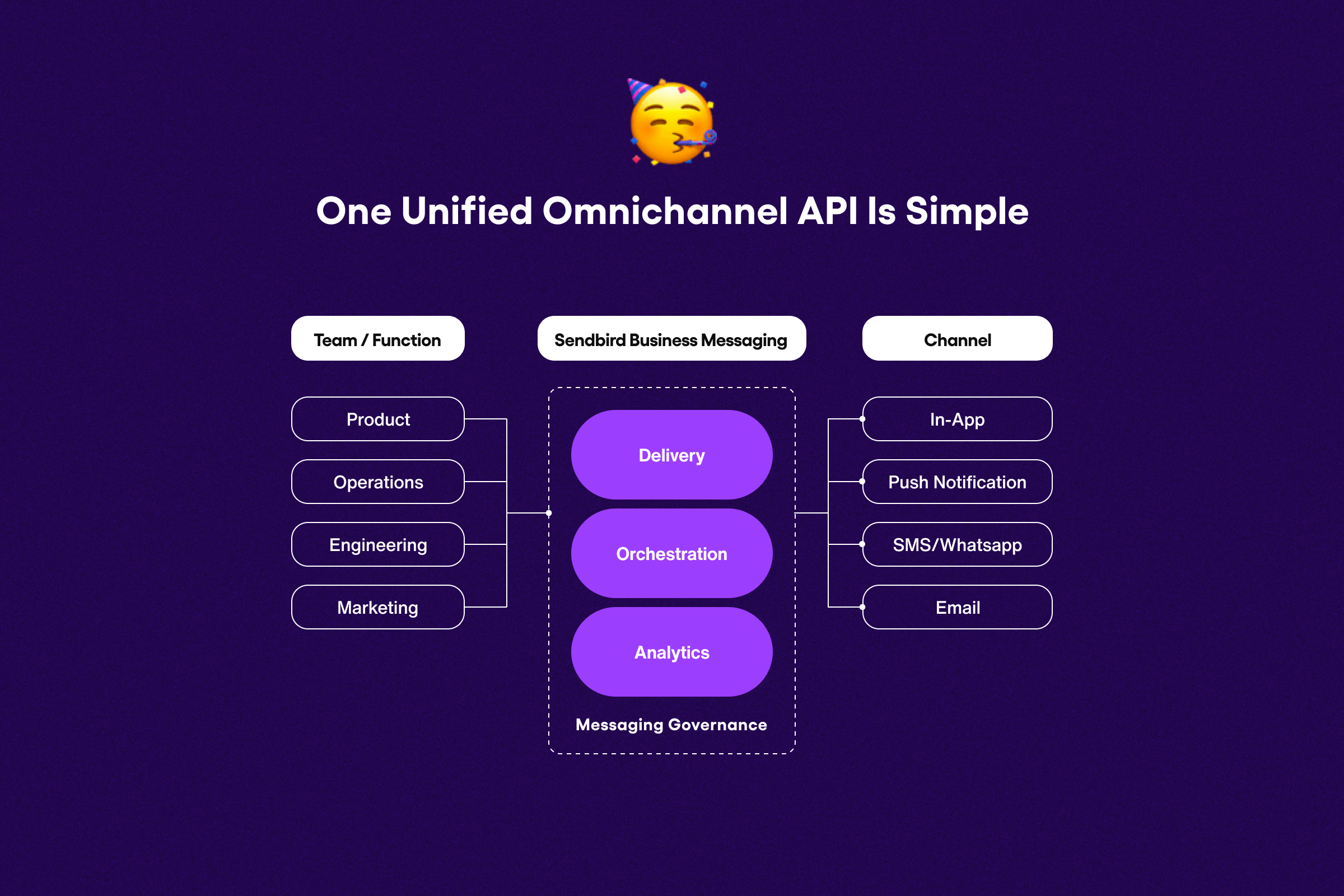What is programmable messaging?

In a world where customer expectations are ever-increasing, sending the right message at the right time on the right channel can be difficult, but also critical.
Whether it’s transactional notifications, operational alerts, marketing, or support—automating the delivery of personalized messages across channels has become essential to modern customer engagement.
This gap in satisfaction presents an opportunity for businesses to embrace a communications strategy that prioritizes channels that capture customer loyalty and deliver a competitive advantage.
This is where programmable messaging comes into play.
What is programmable messaging?
Programmable messaging is a communication technology that allows businesses or developers to create, manage, and automate the sending of messages—like SMS, WhatsApp, in-app notifications, and more—through an API (application programming interface).
With programmable messaging, you can integrate business messaging capabilities directly into your mobile app, website, and systems, allowing these platforms to send and receive messages based on predefined rules, triggers, or workflows.
Powering this level of integration and automation are programmable messaging APIs, which act as middlemen for data exchanges between platforms. Unlike manual messaging, programmatic messaging allows a business to send large volumes of messages at once or based on specific events or conditions without human intervention.
Example:
Say a customer purchases from your eCommerce store and you want to send a transactional SMS message to notify them their order has shipped. Rather than manually sending, your system automatically triggers a confirmation message with purchase details integrated from your CRM through a programmable SMS API.

Thanks to communications APIs, programmable messaging allows for the automation of personalized, targeted communications across channels at any scale.
Benefits of programmable messaging
Programmable messaging has become the lynchpin for modern customer communications. It allows a business to message customers across their preferred channels like SMS, MMS, WhatsApp—even in-app notifications and mobile push in some cases—from a single unified API.
The ability to seamlessly embed new communication capabilities into existing systems and workflows, while leveraging user data for personalization and analytics, has many advantages:
Real-time communications: Programmable messaging enables a truly responsive and timely experience that boosts customer engagement and satisfaction.
Efficiency: Automating outreach and campaign messaging like order confirmations and appointment reminders reduces employee workload and streamlines operations.
Increased engagement: Reaching customers on their preferred channels with personalized messages helps to turn everyday interactions into relevant, relationship-building moments.
Scalability: Built on APIs, programmable messaging is highly scalable and can handle growing customer bases without added infrastructure costs and minimal maintenance.
Reliability: APIs ensure high message deliverability and minimal downtime even during high-demand periods, while automation ensures critical messages arrive on time.
User-level insights: Gain precise engagement insights from built-in API platform analytics while also integrating data seamlessly with existing systems.
Security and compliance: Programmable messaging platforms offer secure cloud infrastructure and APIs that are built compliant with international data protection regulations.
Better customer experience: Integrating with CRMs and other tools lets you personalize communications to deliver a more satisfying experience that drives loyalty and lifetime value.
Overall: Programmable messaging allows for the timely, tailored communications that modern users expect from their favorite brands—while also being highly scalable, efficient, and reliable.
How to develop a scalable, cost-effective omnichannel support strategy
Use cases for programmable messaging
Programmable messaging is used by companies of all sizes, from small businesses to enterprises looking to scale.
Depending on your choice of API provider, you can create, send, and orchestrate all customer communications across all channels with a single programmable messaging API. This includes:
Transactional messages: Order and shipping updates, appointment confirmations, billing notifications, account updates, authentication and security (2FA)
Operational messages: Service updates, internal notifications, policy announcements, security alerts, ad-hoc messaging
Marketing messages: Abandoned cart reminders, loyalty programs, personalized promotions, SMS marketing, MMS marketing
Customer support messages: Ticketing and case updates, feedback requests, reminders and follow-ups, support availability notifications
Because it offers the flexibility to send any message while ensuring compliance with various regulations, programmable messaging is widely used in industries that compete on the basis of a modern messaging experience. This includes ecommerce, financial services, healthcare, on-demand and delivery services, and more.
Read more: Learn how the gig economy is solving its communication crisis with programmable in-app-first messaging.

Elevate your app with in-app communication APIs for the entire customer journey.
How programmable messaging works
Programmable messaging is a powerful tool for businesses that want to automate, personalize, and scale their customer communications using a unified API. Here’s a brief overview of how to use programmable messaging:
1. API integration
It starts by integrating the programmable messaging API into your application or software, such as a mobile app, web app, or CRM platform. The API acts as a bridge between your app and the API gateways of your various messaging channels. This enables you to send and receive messages programmatically using the API.

2. Channel selection
After integration, you can select which channel to use in the API platform’s software. Some API providers only support channels like SMS, MMS, and WhatsApp, and can only send to one channel at a time. However, with Sendbird’s unified API, you can also send in-app notifications and mobile push, and send across multiple channels at once.
3. Crafting a message
Once you’ve selected your channel (or channels), it’s time to create your message. With Sendbird, for instance, our easy-to-use software with message templates make it easy for any team to create and send custom messages in minutes.
4. Sending a message
The API facilitates the sending of the crafted message to the gateway of your chosen channel, then the gateway delivers the message to the recipient. With SMS messages, for example, this is done by the gateway communicating with the SMS telecom providers.
5. Message delivery
Depending on the chosen channel, the message is delivered to the recipient's mobile device in a matter of milliseconds. With SMS, the telecom provider makes the delivery. For messenger apps like WhatsApp, or in-app messages, this is done via API.
6. Real-time message tracking and responses
As messages are sent, the API provides status tracking—sent, delivered, read—so you can track engagement and performance. For two-way communication channels, users can respond directly, and their responses are routed back to you via the API.
7. Analytics and insights
As messages are delivered and responses received, the API collects data from the gateway on message engagement, delivery rates, and user interactions. These insights appear in the API platform’s analytics dashboard, allowing you to optimize communication strategies, adjust content, and A/B test which channels work best for specific segments.

CPaaS solutions vs omnichannel messaging platforms
You may be familiar with CPaaS (Communications Platform as a Service) solutions like Twilio, which offer APIs for programmatically sending messages across various channels.
CPaaS platforms focus on delivering messages through a single channel at a time. While useful, this can get cumbersome as you scale or integrate advanced workflows that span multiple channels. And to reach customers across all key channels, a business often needs multiple APIs, which adds complexity.

CPaaS platforms may also lack capabilities for in-app communications, which offer greater engagement and security than legacy channels like SMS. Beyond being an increasingly preferred channel for customers, in-app messaging has many benefits: a modern multimedia experience, data-rich interactions, plus a 99.99% delivery rate.
So, if you have a mobile app, omnichannel messaging platforms like Sendbird may be a better choice for you. This is because Sendbird Business Messaging allows you to send messages programmatically across all customers’ preferred channels—SMS, MMS, WhatsApp, plus in-app notifications and mobile push—with a single API integration.

In addition to the simplicity of a single solution, omnichannel messaging platforms offer the flexibility to choose the best, most cost-effective channels to drive engagement. By respecting user preferences with strategic channel choices, you can deliver a more satisfying experience that ultimately improves customer loyalty and lifetime value.
Read more: Learn how Porter saved 30% on SMS costs and achieved 78% message engagement with programmable in-app messaging from Sendbird.
The future of programmable messaging supports in-app
Programmable messaging is the gold standard for customer communications in the digital age. Using APIs, it allows you to automate, personalize, and scale your customer communications strategy across channels without human intervention. If you have or are considering a mobile app, you might consider an omnichannel messaging API that supports in-app, unlike many CPaaS platforms.
With Sendbird’s Business Messaging API, you get a simple, unified solution that streamlines customer messaging across your app and external channels without sacrificing security or compliance.
Any team can use our simple software with messaging templates and no-code message builder to create and send custom messages, while using data to create tailored communication strategies that capture customer loyalty and offer a competitive edge. Plus, our UIKits and SDKs help developers to easily create a custom-branded messaging experience that meets the most demanding brand guidelines.
Curious about how to get started? Explore the Sendbird Business Messaging documentation and see how our in-app-first, omnichannel notification API makes it easy to transform your messaging strategy for the better.
For further reading, you might like:

Elevate your app with in-app communication APIs for the entire customer journey.








